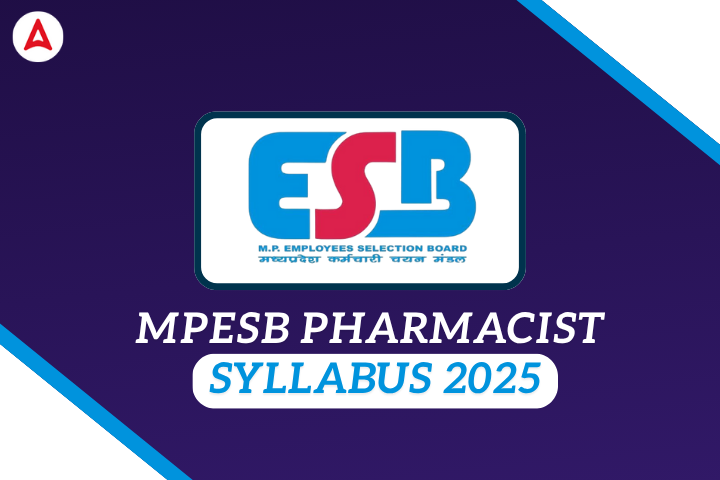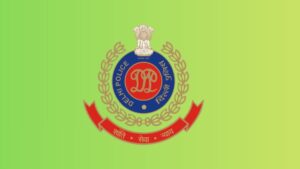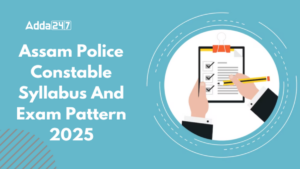The Madhya Pradesh Employees Selection Board has recently announced 313 vacancies for the Pharmacist Grade-2 recruitment. The application process is currently active and candidates who are interested in applying for the post must start their preparation right away as the competition is going to be tough this year. To make the right result oriented plan candidates must understand the complete MPESB Pharmacist Syllabus 2025 provided in this article.
MPESB Pharmacist Syllabus 2025
Since the MPESP Pharmacist Exam 2025 is scheduled to be held on 27 September 2025, giving candidates enough time to prepare. The MPESB Pharmacist Syllabus is divided into two parts. The Part A carries 25 marks and Part B carries 75 marks making the Part B high in weightage and requiring more focus. Candidates can check a quick overview of the MPESB Pharmacist Grade-2 Syllabus 2025 from the table below.
| MPESB Pharmacist Grade-2 Syllabus | |
| Conducting Body | Madhya Pradesh Employees Selection Board (MPESB) |
| Post | Pharmacist Grade-2 |
| Vacancy | 313 |
| Exam Mode | Online |
| Exam Format | 100 questions for 100 marks |
| Negative Marking | 1/4 mark for every wrong answer |
| Duration | 120 minutes |
| Job Location | Madhya Pradesh |
| Selection Process | Written Exam and Document Verification |
| Official Website | esb.mp.gov.in |
Also Check, MPESB Pharmacist Recruitment 2025
MPESB Pharmacist Syllabus 2025: Part A
The Part A of the MPESB Pharmacist Syllabus 2025 is worth 25 marks and includes the following subjects:
MPESB Pharmacist Syllabus General Knowledge
- General knowledge of Madhya Pradesh
- Central wildlife sanctuary and national park
- Major rivers
- Irrigation planning
- Major tourist places (forts, palaces, caves, mausoleums, etc.)
- Prominent personalities of Madhya Pradesh
MPESB Pharmacist Grade-2 Syllabus General Hindi
- तत्सम एवं तद्भव शब्द (Tatsam and Tadbhav Words)
- समास, उपसर्ग एवं प्रत्यय (Compound Words, Prefixes, and Suffixes)
- वाक्यांश के लिए एक सार्थक शब्द, वाक्य-रचना एवं वाक्य-शुद्धि (One Word for a Phrase, Sentence Formation, and Sentence Correction)
- मुहावरे एवं लोकोक्तियाँ (Idioms and Proverbs)
- संधि एवं संधि-विच्छेद (Joining and Splitting of Words)
- विलोम शब्द एवं पर्यायवाची शब्द (Antonyms and Synonyms)
- शब्द-रूपांतरण (लिंग, वचन, कारक) (Word Transformation)
- अपठित गद्यांश पर आधारित प्रश्न (Questions Based on Unseen Passage)
MPESB Pharmacist Grade II Syllabus General Reasoning and Aptitude
- Non-verbal series
- Verbal and figure classification
- Problem-solving
- Coding and decoding
- Spatial orientation
- Syllogistic reasoning
- Analogies
- Visual memory
- Judgment
- Relationship concepts
- Observation
- Spatial visualization
- Arithmetic reasoning
- Statement conclusion
- Similarities and differences
- Discrimination
- Arithmetical number series
- Decision making
- Analysis
MPESB Pharmacist Syllabus General English
- Idioms & Phrases
- Shuffling of Sentences in a passage
- Active/ Passive Voice of Verbs
- One word substitution
- Antonyms, Spellings/ Detecting Mis-spelt words
- Spot the Error
- Shuffling of Sentence parts
- Fill in the Blanks, Synonyms/ Homonyms
- Cloze Passage
- Comprehension Passage
- Improvement of Sentences
- Conversion into Direct/ Indirect narration
MPESB Pharmacist Syllabus General Mathematics
- Pie Chart and Data Interpretation
- Time & Speed
- Simplification
- Pictorial Graph
- HCF LCM
- Problem On Ages
- Bar Graph
- Profit & Loss
- Area
- Average
- Investment
- Time & Work
- Simple & Compound Interest
- Percentage
MPESB Pharmacist Syllabus General Science
- Weight
- Mass
- Volume
- Reflection
- Refraction
- Transparency
- Law of motion and gravitation
- Chemical reaction
MPESB Pharmacist Syllabus 2025: Part B
The Part B of the MPESB Pharmacist Syllabus 2025 carries a total of 75 marks and consists of the following topics:
MPESB Pharmacist Syllabus Pharmaceutics
Introduction to different dosage forms, their classification with examples-their relative applications. Familiarization with new drug delivery systems. Introduction to Pharmacopoeias with special reference to the Indian Pharmacopoeia. Size reduction, Size separation, Metrology-system of weights and measures. Calculations including conversion from one to another system. Percentage calculations and adjustment of products. Use of alligation method in calculations. Isotonic solutions. Mixing and homogenization. Packaging of pharmaceuticals Extraction and galenicals, Clarification and filtration, Heat processes, Introduction to drying processes, Distillation, Sterilization-concept of sterilization and its differences from disinfection-thermal resistance of microorganisms. Detailed study different sterilization processes. Study of immunological products like sera, vaccines, toxoids and their preparations., Processing of tablets, Processing of capsules.
MPESB Pharmacist Grade-2 Syllabus Pharmaceutical Chemistry
Acids, bases and buffers, Gastrointestinal agents, Acidifying agents, Antacids, Protectives and adsorbents, Saline cathartics. Antioxidants, Topical agents – (i) Protectives (ii) Antimicrobials and astringents (iii) Sulphur and its compounds (iv) Astringents-alum and zinc sulphate. Dental product, Inhalants, Respiratory stimulants, Expectorants and emetics, Antidotes. Major intra and extracellular electrolytes, Inorganic official compounds of iron, iodine and calcium; ferrous sulfate and calcium gluconate. Radio pharmaceuticals and contrast media radioactivity, Identification tests for cations and anions as per Indian Pharmacopoeia. Quality control of drugs and pharmaceuticals.
MPESB Pharmacist Grade II Syllabus Biochemistry and Clinical Pathology
Introduction to biochemistry. Brief chemistry and role of carbohydrates, proteins, lipids, their classification and related diseases. Role of minerals and water in life processes. Brief chemistry and role of vitamins and coenzymes. brief concept of enzymatic, Introduction to pathology of blood and urine.
MPESB Pharmacist Syllabus Pharmacognosy
Definition, history and scope of pharmacognosy including indigenous system of medicine. Various systems of classification of drugs of natural origin. Adulteration and drug evaluation; significance of pharmacopoeial standards. therapeutic effects and pharmaceutical applications of alkaloids, terpenoids, glycosides, volatile oils, tannins and resins. Occurrence, distribution, organoleptic evaluation, chemical constituents including tests wherever applicable and therapeutic efficacy of (a) Laxatives (b) Cardiotonics (c) Carminatives & G.1.regulators catechu. hyoscyamus, belladonna, aconite, ashwagandha, ephedra, opium, cannabis, nux vomica. rauwolfia. vasaka, tolu balsam, tulsi. guggal, colchicum, vinca. chaulmoogra oil. pterocarpus, gymnema sylvestro. gokhru, punarnava. ipecacuanha. benzoin, myrrh,
neem, curcuma. cinchona. ergot. shark liver oil and amla. papaya, diastase, yeast. Collection and preparation of crude drugs from the market as exemplified by ergot, opium, rauwolfia, digitalis, senna. Study of source, preparation and identification of fibres used in sutures and surgical dressings-cotton, silk, wool and regenerated fibres.
MPESB Pharmacist Grade-2 Syllabus Human Anatomy and Physiology
Definition of various terms used in anatomy, physiology, Structure of cell, unction of its components with special reference to mitochondria and microsomes. Elementary tissues of the body, Composition of blood, blood group and coagulation of blood, Name and functions of lymph glands. Anatomy and physiology of different body systems in Brief.
MPESB Pharmacist Grade II Syllabus Dispensing Pharmacy
Prescriptions: Reading and understanding of prescription; Incompatibilities in prescriptions, Posology: Dose and dosage of drugs, Dispensed Medications: (i) Powders (ii) Liquid oral dosage (b) Biphasic liquid dosage forms: • Suspensions • Emulsions (iii) Dental and cosmetic preparations: (iv) Semi-solid dosage forms: (a) Ointments (iv) emulsification. (v) Sterile dosage forms: (a) Parenteral dosage forms (b) Sterility testing, (c) Ophthalmic products- study of essential characteristics of different ophthalmic preparations.
MPESB Pharmacist Syllabus Health Education & Community Pharmacy
Concept of health-definition, indicators of health, concept of disease, prevention of diseases. Environment and health. First aid emergency treatment in shock, snake bite, burns, poisoning, heart disease, fractures and resuscitation methods. Elements of minor surgery and dressings. Fundamental principles of microbiology, organisms of common diseases. Non-communicable diseases causative agents, prevention, care and control. Cancer, diabetes, blindness, cardiovascular diseases. Communicable disease causative agents, modes of transmission and prevention. (a) Respiratory infections-chicken pox, measles, influenza, diptheria, whooping cough and tuberculosis. (b) Intestinal infections-poliomyelitis, hepatitis, cholera, typhoid, food poisoning, hookworm infection. (c) Arthropod borne infections-plague, malaria, filariasis. (d) Surface infections-rabies, trachoma, tetanus, leprosy. (e) Sexually transmitted diseases-syphilis, gonorrhoea, AIDS. Nutrition and health, vitamins and minerals. Demography and family planning, natural family planning methods, chemical methods, mechanical methods, hormonal, contraceptives, population problem of India. Epidemiology – I mmunity and immunisation, immunological products and their dose schedule. Principles of disease control and prevention, hospital acquired infection, prevention and control.
MPESB Pharmacist Grade-2 Syllabus Pharmaceutical Chemistry II
Chemistry of pharmaceutical organic compounds covering their nomenclature, chemical structure, uses and the important physical and chemical properties. The stability and storage conditions and the different types of pharmaceutical formulations of the drugs.
MPESB Pharmacist Grade II Syllabus Pharmacology and Toxicology
Introduction to pharmacology, scope of pharmacology. Routes of administration of drugs, their advantages and disadvantages. Various processes of absorption of drugs and the factors affecting them. Metabolism, distribution and excretion of drugs. General mechanism of drugs action and the factors which modify drugs action. Pharmacological classification of drugs. (i) Drugs acting on the central nervous system: (a) General anaesthetics, intravenous anesthetics. (b) Analgesic, antipyritic, sedatives and hypnotics, anti convulsants, (ii) Local anaesthetics. (iii) Drugs acting on autonomic nervous system. (iv) Drugs acting one eye, (v) Drugs acting on respiratory system (vi) Antacids, (vii) Cardiovascular drugs, (viii) Drugs acting on the blood and blood forming organs. (ix) Drugs affecting renal function (x) Hormones and hormone antagonists (xi) Drugs acting on digestive system
MPESB Pharmacist Exam Pattern 2025
The MPESB Pharmacist exam consists of 100 question for a total of 100 marks. Candidates must note that for every correct answer candidates will get 1 marks and for every wrong answer 0.25 or 1/4 marks will be deducted.
| MPESB Pharmacist Exam Pattern 2025 | ||||
| Part | Subjects | Number of Questions | Maximum Marks | Duration |
| Part A | General Knowledge, General Hindi, General English, General Mathematics, General Science, General Reasoning and Aptitude | 25 | 25 | 120 minutes |
| Part B | Technical Subjects | 75 | 75 | |
| Total | – | 100 | 100 | 120 minutes |




 Delhi Police Constable Driver Syllabus a...
Delhi Police Constable Driver Syllabus a...
 WBCS Syllabus and Exam Pattern 2025 (Rev...
WBCS Syllabus and Exam Pattern 2025 (Rev...
 Assam Police Constable Syllabus And Exam...
Assam Police Constable Syllabus And Exam...

 Adda247 Job portal has complete information about all Sarkari Jobs and Naukri Alerts, its latest recruitment notifications, from all state and national level jobs and their updates.
Adda247 Job portal has complete information about all Sarkari Jobs and Naukri Alerts, its latest recruitment notifications, from all state and national level jobs and their updates.



